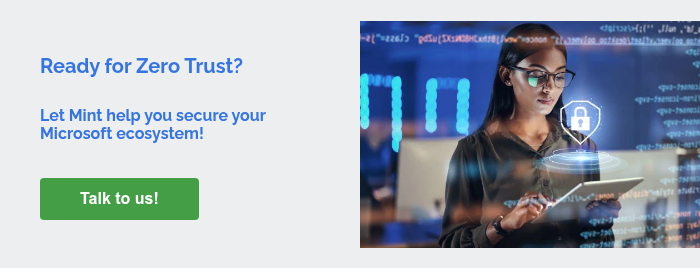Secure by design: Putting Zero Trust into your Microsoft stack
South African companies need security models that assume compromise. The threats are very real and, as agentic AI becomes both a weapon and a tool. Increasingly, AI and agentic AI are becoming vulnerable to issues such as input manipulation, data poisoning, agent behavior deviation, and memory poisoning. These are very real risks that ask companies to approach the threats as if they have already happened.
This is the motivation behind the Zero Trust framework which lives by the motto: Never trust, always verify. This article outlines how to embed Zero Trust into your Microsoft architecture with minimal disruption.
- Why Zero Trust is essential for South Africa’s hybrid and cloud-first businesses.
- How Microsoft tools like Entra ID and Defender enforce Zero Trust principles.
- How to secure users, devices, apps and data under one unified model.
- Why compliance (POPIA included) needs Zero Trust foundations.
- How to introduce Zero Trust in phases without breaking operations.
Why Zero Trust matters in South Africa
Like many countries, Zero Trust is important to the South African organization. Hybrid workforces, cloud apps, remote teams, mobile devices and multiple networks mean that the traditional security perimeter is almost obsolete.
Zero Trust responds to this by enforcing identity, device and context-based access at every layer which protects against insider threats, compromised credentials and ransomware in ways that static security models cannot. It’s also an essential step in compliance readiness as it ensures user access and data flows are controlled, auditable and aligned with legislation like POPIA.
What Microsoft tools enable a Zero Trust architecture?
Microsoft’s security architecture is already designed with Zero Trust principles at its core, the key is knowing how to configure and connect the right services. It starts with Microsoft Entra ID, previously known as Azure Active Directory, which manages secure identities and applies conditional access policies that ensure only the right users get the right access under the right conditions. This forms the foundation for identity trust and adaptive authentication.
For endpoint security and compliance, Microsoft Intune allows companies to set up device policies that enforce encryption, compliance checks and access controls, all without compromising mobility or user experience. Microsoft Defender for Endpoint monitors device behavior continuously, detecting anomalies, malware and breach attempts in real time. It ensures that even compromised devices can be quarantined or restricted before causing impact.
Cross-platform visibility and response is provided by Microsoft Sentinel ties everything together. As Microsoft’s native SIEM, it collects signals from across your Microsoft 365, Azure and on-premises environments, using AI to identify risks and automate responses across identity, endpoints, apps and infrastructure.
These tools aren’t just individual products, when connected, they enable Zero Trust at scale and help companies embed protection, detection and response into their core business operations.
How to secure access, devices and data in hybrid teams
The Zero Trust model breaks this into three key pillars:
- Identity – Only verified users can access resources, based on risk level and sign-in context
- Device – Only compliant, policy-enforced devices can connect
- Data and apps – Access to files, databases and systems is limited by role, location and sensitivity
Mint works with your business to implement these layers using the Microsoft stack, integrating controls without impacting productivity or access. This means frontline teams can work from anywhere, while the business retains full visibility and control behind the scenes.
By limiting exposure, monitoring access, and enforcing policy, organizations reduce their risk posture and demonstrate due diligence under POPIA and similar frameworks. Zero Trust is the model that makes modern business possible securely, visibly, and at scale.
Whether you’re managing remote teams, expanding your Microsoft cloud footprint, or preparing for audits, Zero Trust helps you protect what matters without slowing progress.



